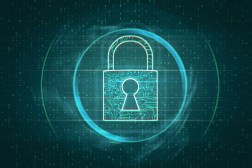How to teach digital literacy skills at the right time

While this generation of students is growing up using technology, they often lack the complete host of digital literacy skills needed for success by the time they enter high school, said Jeff Meyer, director of education at Learning.com during a recent webinar hosted by edWeb.net.
The technology and core standards of organizations such as ISTE, CSTA, and Common Core State Initiative stipulate that students need foundational digital literacy skills to demonstrate writing, reading, and mathematical achievement. It is imperative that students are prepared to enter high school ready for the rigors of writing advanced essays, conducting internet research, engaging in data collection, presenting ideas and drawing conclusions.
So as early as kindergarten, digital literacy skills should be embedded in the everyday curriculum and instruction. Drawing on the stage theory of cognitive development developed by the Swiss developmental psychologist Jean Piaget, Meyer has outlined 12 digital literacy skills students must master before entering high school, broken into four categories: keyboarding and digital essentials, online safety and digital citizenship, technology applications, and computational thinking and coding.
1. Keyboarding and digital essentials
Computer fundamentals and keyboarding focus on building savvy and safe user mindsets. Beginning sometime between kindergarten and second grade, students should learn and understand different computer systems, distinguish between hardware and software, and recognize the ethical issues and responsibilities associated with using software and computers. Keyboarding basics also begin in the early grades, and the goal is that by the time students enter high school they can type 30 to 40 words a minute with at least 90 percent accuracy.
2. Online safety and digital citizenship
Building a student mindset around the essential digital literacy skills, online safety, and digital citizenship starts as soon as students have access to computing devices. It is vital to prepare students in grades K-5 with skills to understand the need to be safe online, make responsible choices and be conscious of the impact of technology. It is imperative that students in grades 6-8 receive reinforcement of online safety and digital citizenship skills with an emphasis on preparing safe, conscience consumers of digital content in preparation for conducting researching in high school or college.
3. Technology applications
The most significant theme, technology applications, contains six digital literacy essentials: visual mapping, presentations, multimedia, internet databases, word processing, and spreadsheets. Technology applications and tools help students organize their thoughts, collect data for analysis, and enable collaboration with others.
Meyer highlights that visual mapping skills for students in grades K-2 form the first step in the writing process through the organization and gathering of thoughts, the creation of concept maps, and brainstorming processes.
Presentation skills allow students to practice verbal communication, share what they learn with others, and build digital literacy.
When internet databases is introduced in grades K-2 and expanded in grades 3 -8, students begin using tools such as internet browsers to search, sort, and filter queries that will be indispensable for research in high school and beyond.
Word processing and spreadsheets are also essential skills found in both digital literacy and core standards. Students who are proficient and efficient word processors increase their ability in high school to write more complex text, while skills that they develop with spreadsheets allow them opportunities to graph charts, visualize data, and communicate the data back through trends or draw conclusions.
4. Computational thinking and coding
Coding and computational thinking — a platform- and language-agnostic set of skills designed to acclimate students to the concept of algorithms — are “[kind of] the new kids on the block” in digital literacy, Meyers says.
“Instruction is driven by the realization that coding is a career field that is ripe with immediate opportunities for our students.”
That gives students valuable and cross-curriculum cognitive skills. Through these two digital literacy essentials, students learn that designing a program or any product requires essential social and emotional skills around perseverance and adaptability.
Things to consider
State and federal standards and online assessments require that school districts implement K-8 digital literacy curricula that support all 12 digital literacy skills. These essential skills should be introduced, reinforced and mastered at the appropriate cognitive stages and grade levels.
An effective digital literacy curriculum is one that monitors classroom practice and student progress while also being customizable for teachers to meet the learning needs and styles of each student. Meyers recommends using resources from the ISTE, CSTA and Common Core websites for digital literacy standards guidance and for districts looking to implement a digital literacy curriculum or program to reach out to curriculum providers, publishers and other school districts for digital literacy scope and sequence and pacing guides.
About the presenter
Jeff Meyer, director of education for Learning.com, provides thought leadership, professional development, and consulting with educators, parents and students regarding the importance of digital literacy education and how Learning.com helps students excel in a digital world. Jeff has worked in public education since 1982 as a high school English language arts teacher and physical education coach. After receiving an M.Ed in curriculum and instruction and instructional technology, Jeff worked as director of professional development and instructional technology in the Eanes Independent School District in Austin, Texas, and then was named director of instructional technology for Austin Independent School District in 2000. Jeff joined Learning.com in 2005, and has worked in a variety of roles, including professional development, customer services, and product marketing. He is passionate about the need to transform education using data-based, student-centered approaches and digital resources to prepare students for the future.
Join the community
Success in a Digital World is a free professional learning community on edWeb.net that will help you prepare your students with the skills they need to excel in our digital world.
The edWeb webinar referenced above, sponsored by Learning.com, can be found here.




